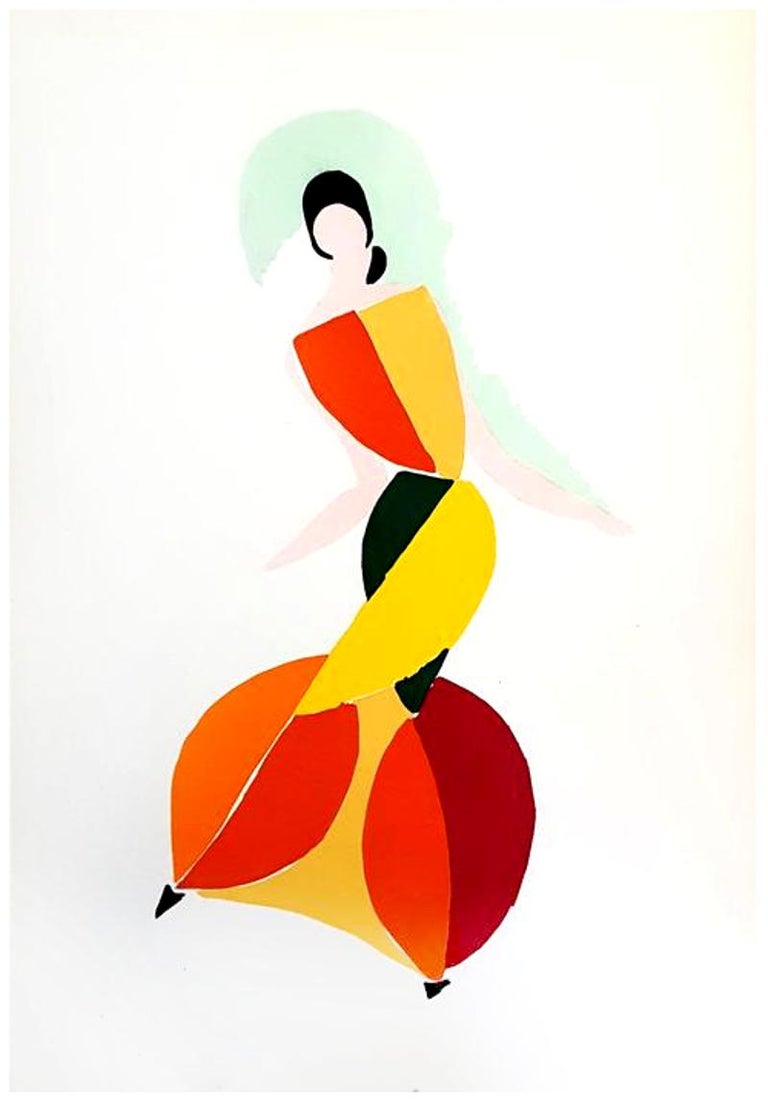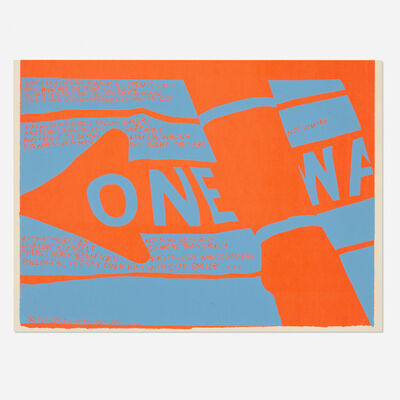Unit Four Blog Post
For this week’s blog
post, I want to talk about two topics that were Hannah Gadsby brought up in her
fantastic Netflix special, Nanette.
1.
Cubism
and Female Artists
Gadsby
had some fiery and hilarious commentary on Pablo Picasso. She punctuated her
commentary with “…but Cubism,” which she used as both a punchline and an
imaginary counterpoint. Historically, Gadsby’s imaginary counterpoint would be
inaccurate because although Picasso was the most famous Cubist artist, he
wasn’t the only game in the art world town. For instance, Georges Braque was
doing Cubist art around the same time as Picasso. In fact, many cubist artists
were women. Here is a list of some amazing female cubists and other underrated
female artists who made some great art.
1. Leonora
Carrington
2. Sonia
Delaunay
3. Corita
Kent
4. Hilda
Af Klint
5. Tamara
de Lempicka
6. Dora
Maar
7. Rose
O’ Neill
8. Lyubov
Popova
9. Bridget
Riley
10. Alma
Thomas
1.
Gendered
Colors
In
one of her monologues, Gadsby talks about societal gender norms. Gadsby states:
You
know what’s weird? Pink headbands on bald babies! That’s weird. I mean,
seriously, would you put a bangle on a potato? No, that’s organic. I paid a lot
for that potato. Of course I understand why parents do it. Clearly they’re sick
and tired… of their beautiful baby girl… being mistaken for a boy baby because
of the no hair situation. I understand that. But the thing is, I don’t assume
bald babies are boys. I assume they’re angry feminists, and I treat them with
respect. How about this? How about we stop separating the children into
opposing teams from day dot? How about we give them, I dunno, seven to ten
years to consider themselves… on the same side?
Although this monologue is funny on
its own, it’s even funnier when you learn that the designation of the color pink
for girls and the color blue for boys is historically, a relatively recent
phenomenon. An article from Smithsonian,
(a longtime favorite of mine) discusses the history of gendered colors. An
article from The Atlantic discusses
it as well, but there are some good tidbits about the cultural connotations of the
color pink in works of literature, such as The
Great Gatsby and Little Women.
The articles are below:
Gadsby’s
discussion about gendering babies and the articles about the history of gendering colors got me curious about what baby toys are currently like in
comparison to the baby toys in the past. I scrolled through Pinterest at some
vintage baby toys. There isn’t really a predominant color in the collection of toys
(maybe pastels?) It appears a recurring theme in the vintage toys are
terrifying anthropomorphic animals with oversized pupils. Back then, toy makers
wanted babies to equally have the best and finest nightmare fuel. Here is the link
below:
Later, I googled “baby toys for girls.” Unsurprisingly, the color scheme
for the toys are predominantly pink. The toys were representations of makeup
vanities, kitchen appliances, purses, castles, unicorns etc. Here is the link
below:
Later, I googled “baby
toys for boys.” The color scheme for the boy’s toys has more variety based in
primary colors than the baby toys for girls. The toys are automobiles, blocks,
musical instruments, books, magnetic letters, globes, tools, etc. The toys for
boys seem to more noise centric, (I didn’t really see many rattles or musical
instruments that were advertised for baby girls.) The boy’s toys are described
as being ‘learning toys,” “educational,” “cool,” “inspiring,” “eco-friendly”
and “developmental.” The girl’s toys were advertised with less adjectives (the
most common adjective was “cute.”) There are also way more toys based on
Montessori teaching that are advertised in the boy’s toys than there are being
advertised in the girl’s toys. There are more toys that focus on kicking and
crawling for boys than for girls. Here is the link below:
https://www.google.com/search?q=baby+toys+for+boys&rlz=1C1GCEA_enUS840US840&source=lnms&tbm=isch&sa=X&ved=0ahUKEwiD2vG5icviAhVIn-AKHcWdDPMQ_AUIESgC&biw=1366&bih=657#imgrc=_So, what do you think about these differences? Do you think that these differences between the toys state something about gender norms and standards in society? Maybe you think “they’re just toys, you’re overthinking this.” I’m open to your thoughts to engage in a conversation. Including ones about scary toys!
Gadsby, Hannah. Nanette, Netflix, 2018.












Hi Alexandra, I really enjoyed your post! In terms of the gendered toys, I have found it to be true in terms of my growing up and my being a part of my cousins' childhoods that there are usually more toys like robots, legos, actions figures and games geared to boys, while dolls, tea sets, and dress up clothes are usually geared toward girls. However, I think this is rapidly changing. In terms of colors for girls and boys, I love pink! And will probably dress my daughter in pink if and when I have one. But I also love blue! And I also love pink and boys and men. So I would probably dress a boy baby in pink as well. I think parents should dress their kids in whatever clothes float their boats. When a child is old enough to choose some of their own toys or clothes, I think they should, regardless of what color these clothes are or who they are marketed for. Honestly I think that people over think this issue, and that it isn't that hard to be a supportive parent no matter what clothes your child likes to wear or what toys they like to play with. That's just part of being a good parent (imo). I do think that it is important to try to be less judgmental of kids! If a boy wants a wear a dress or keep his hair long, he should.
ReplyDeleteThe line "toy makers wanted babies to equally have the best and finest nightmare fuel" made me chuckle.
ReplyDeleteLots of good ideas in this post! So much to talk about!
I did know the bit about the whole blue/pink thing being a more recent phenomenon, but hadn't dived into it as deeply as you do.
I also love the point about the female cubists. First, seeing their work is stunning. Second, it reminds me of the current debates about what to do with certain accomplished artists/actor/musicians who have "behaved badly," to put it mildly. To simplify the debate, some people object to "canceling" them because what will we do without their work to discuss. Alexandra's post reminds us that Cubism isn't JUST Picasso. Again, these are complicated topics, but worth thinking/talking about.
This is so interesting. You can tell that this topic really interested you as well, and was very researched. I really enjoyed the parts about gendered toys and your questions at the end. I don't think you're overthinking it at all. I think that it shouldn't be odd or looked down upon for a cute baby girl to wear blue. I love blue! I love pink also. But I guess that is my point. While I am not a cute baby girl, I do think that the colors, toys, and expectations should be the same. Boys can play in the dirt and so can girls. Those globes and instruments, a baby girl should be encouraged to use those if she likes them. Dolls and purses and such are not bad, but I think parents should allow for room to breath instead of forcing the Barbie's or something similar. It just depends on the child. The expectation of pink for girls and blue for boys is confusing and I think that Gadsby does a good job at exploring that with humor.
ReplyDeleteWow. You blew me away with your list of female cubist. I got lost looking into your list of paintings. Anyway I think my grandpa has a bunch of those old child’s dolls(Hummels) around his house. I think it’s a German thing. A German thing I will not inherit. I believe that the “genderizing” of colors and dolls is relatively recent. I thought Gadsby color commentary was super effective and I agree with your blog post dwelling on that particular issue. Thanks for the hint about the “Atlantic” article. I’m about to go check it out.
ReplyDeleteI really like this, Alexandra! I enjoyed the "Cubism" discussion and photos of paintings. They were very cool to look at! Older toys were so creepy! How were children not traumatized back then? It was interesting that during your research you compared that companies associated words like "educational" and "developmental" to boy toys. However the word "cute" was the common link to girl toys. I think this was crucial to point out and says something about gender standards in our society. Also, that baby gif made me laugh!
ReplyDeleteI really how how you incorporated the work of female cubbist ar! It has been a while since my last art history class and I found this blog post as well as Gadsby's art history part of her comedy skit to be really interesting! I also like the discussion of the gendered colors, I don't really think of colors being gendered. The part when Gadsby talks about the ambiguity of the color blue is entertaining and enlightening.
ReplyDelete